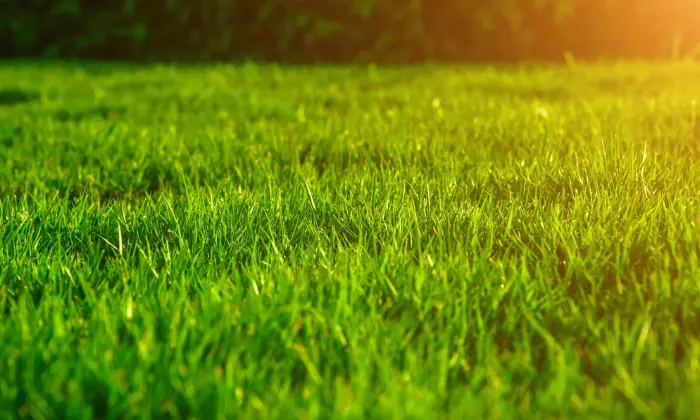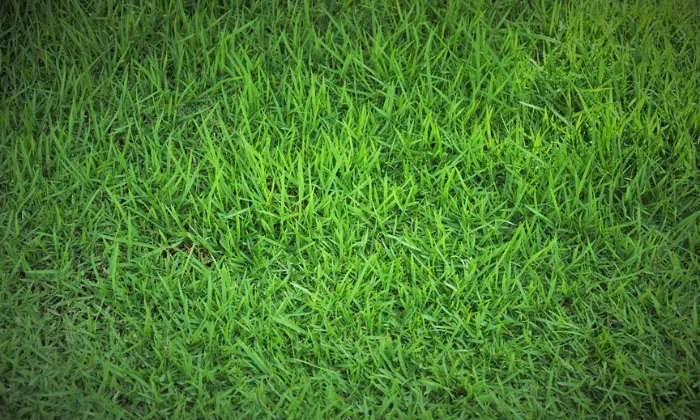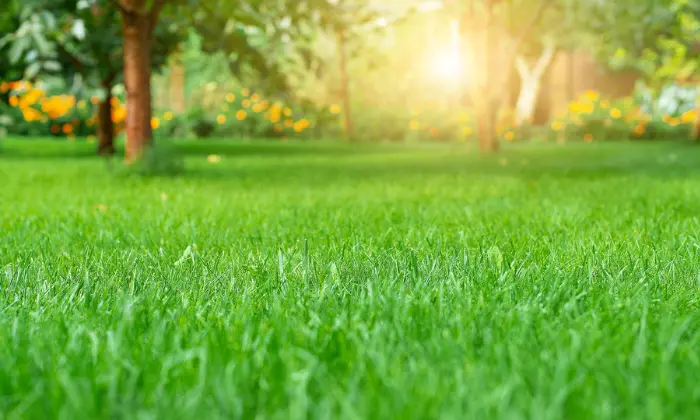How to transplant grass is a vital aspect of lawn care that often gets overlooked. While planting new grass seeds is common, transplanting existing grass can be equally beneficial for achieving a lush and healthy lawn. In this article, we’ll delve into the importance of transplanting grass and the numerous preparation benefits and Tips.
How to Transplant Grass

Transplanting grass is a valuable technique in lawn care, enabling you to redistribute healthy grass to areas in need. Whether you’re repairing patches, expanding your lawn, or addressing soil erosion, transplant grass can promote a lush and uniform turf.
Benefits of Transplanting Grass
Transplanting grass offers numerous benefits for maintaining a healthy grass and vibrant lawn. It allows for the rejuvenation of troubled spots, promoting a uniform and lush appearance. Moreover, it’s a cost-effective solution, saving money compared to purchasing newly planted sod or grass seeds. Additionally, it promotes environmental sustainability by minimizing the need for chemical inputs and preserving existing grass vegetation, thus contributing to a more eco-friendly landscape.
Fill Bare Patches: Transplanting new grass allows you to fill in bare spots and achieve a more consistent lawn appearance.
Cost-Effective: It’s often more cost-effective than laying sod or reseeding large areas, especially if you have excess old grass in your yard.
Quicker Results: Compared to waiting for new grass seeds to germinate, transplanting grass provides quicker results, with established grass immediately improving the aesthetic of the area.
Preservation of Genetic Quality: By transplanting grass from your own lawn, you ensure that the new and old dead grass patches have the same genetic makeup and are well-suited to your local climate and soil conditions.
Preparation for Transplanting Grass

Before you begin transplanting grass, it’s crucial to assess the health of the grass, choose the right time for transplantation, and gather all necessary tools and materials. Let’s break down each step:
Assessing the Health of the Grass
Before selecting grass for transplantation, examine its health carefully. Look for the following signs of healthy grass:
- Vibrant green color
- Dense growth
- Strong root system
- Absence of diseases or pests
- Active growth (avoid dormant or stressed grass)
Choose grass clumps that exhibit these characteristics to ensure successful transplantation and promote healthy grass growth in the new grass location.
Choosing the Right Time for Transplantation
Timing is crucial for successful healthy grass growing transplantation. Ideally, choose a time when the grass seed is actively growing and the weather conditions are favorable. In most regions, early spring or early fall are the best times for transplantation, as the weather is cooler and there’s usually more moisture available.
Avoid transplanting grass during periods of extreme heat or drought, as this can stress the grass and reduce its chances of survival. Additionally, avoid transplanting during the dormant season, as grass is less likely to establish itself during this time.
Gathering Necessary Tools and Materials
Ensure you have all the tools and materials you’ll need for the transplantation process. Here’s a list of essential items:
- Shovel or spade: For digging up grass growing clumps
- Garden fork: Optional but useful for loosening compacted soil
- Wheelbarrow or garden cart: For transporting grass clumps and soil
- Watering can or garden hose: To water the transplanted grass immediately after planting
- Fertilizer: Optional but beneficial for promoting healthy growth after transplantation
- Mulch: Optional but can help retain moisture and protect transplanted grass
- Gloves: To protect your hands during the transplantation process
Having these tools and materials on hand will make the transplantation process smoother and more efficient. By carefully assessing the health of the grass, choosing the right time for transplantation, and gathering all necessary tools and materials, you’ll set yourself up for success when transplanting grass.
Step By Step Method of Transplanting Grass

Transplanting grass requires careful preparation and execution to ensure the health and success of the transplanted grass. Here are the steps involved:
Preparing the New Location
Before transplanting grass, prepare the new grass location where you’ll be planting the grass growing clumps. Follow these steps:
- Clear the area of any debris, weeds, or rocks.
- Loosen the soil to a depth of about 4-6 inches using a shovel or garden fork.
- Amend the soil with compost or organic matter if necessary to improve its quality and fertility.
Digging up the Grass
Once the new grass location is prepared, it’s time to dig up the grass growing clumps from the existing grass lawn. Follow these steps:
- Use a shovel or spade to carefully dig around the selected grass growing clumps, ensuring you excavate a good portion of the root system.
- Lift the grass growing clumps from the ground, taking care not to damage the roots.
Handling the Grass Roots Properly
Proper handling of the grass roots is essential to minimize stress and ensure successful transplantation. Follow these guidelines:
- Handle the grass clumps gently to avoid damaging the roots.
- Keep the roots moist during the transplantation process to prevent them from drying out.
- If the grass clumps are large, consider dividing them into smaller sections to cover a larger area.
Planting the Grass in the New Location
Once the grass clumps are lifted, it’s time to plant them in the prepared new grass location. Follow these steps:
- Place the grass clumps into the prepared receiving area at the same depth they were growing previously.
- Space the grass clumps evenly to achieve uniform coverage.
- Press the soil gently around the roots to ensure good soil contact.
Watering and Caring for the Transplanted Grass
After planting the grass clumps, it’s crucial to provide adequate water and care to promote root establishment and minimize transplant shock. Follow these guidelines:
- Water the transplanted grass immediately after planting to settle the soil and provide moisture to the roots.
- Keep the transplanted area consistently moist for the first few weeks, watering as needed to prevent the soil from drying out.
- Avoid heavy foot traffic on the transplanted area until the grass has established itself.
- Monitor the transplanted grass regularly for signs of stress, such as wilting or yellowing leaves, and address any issues promptly.
By following these steps for transplanting grass and providing proper care, you can help ensure the health and success of the transplanted grass in its new grass location.
How to Care Newly transplanting Grass

After transplanting grass, diligent post-transplantation care is essential to ensure the health and successful establishment of the transplanted grass. Here’s how to care for your newly transplanted grass:
Monitoring the Transplanted Grass
Regular monitoring of the transplanted grass is crucial to detect any signs of stress, disease, or issues early on. Here’s what to look out for:
- Wilting or yellowing leaves: These can indicate that the transplanted grass is experiencing stress and may need additional water or care.
- Pests or diseases: Keep an eye out for any signs of pests or diseases affecting the transplanted grass. Prompt treatment may be necessary to prevent further damage.
- Uneven growth: Monitor the growth of the transplanted grass for hot water to ensure it’s establishing evenly and filling in the new grass area effectively.
Providing Appropriate Maintenance
To help the transplanted grass establish and thrive, provide appropriate maintenance, including:
- Watering: Continue to water the transplanted area regularly, keeping the soil consistently moist for the first few weeks after transplantation. Gradually taper off watering as the grass establishes itself.
- Fertilization: Apply a balanced fertilizer to the transplanted area to provide essential nutrients and promote healthy grass growth. Follow recommended application rates and timing based on the type of grass and local growing conditions.
- Mowing: Once the transplanted grass has established itself and begun to grow, mow it regularly to maintain an appropriate height. Avoid cutting more than one-third of the grass blade length at a time to prevent stress and promote healthy grass growth.
Tips for Ensuring Successful Transplantation
To maximize the chances of successful transplantation and promote the health of the transplanted grass, consider the following tips:
- Choose healthy grass clumps for transplantation, ensuring they have strong root systems and vibrant growth.
- Transplant grass during the optimal time of year when weather conditions are favorable for root establishment, such as early spring or early fall.
- Handle the grass clumps gently during transplantation to minimize root damage and stress.
- Water the transplanted grass immediately after planting to settle the soil and provide moisture to the roots.
- Avoid heavy foot traffic on the transplanted area until the grass has established itself and begun to grow vigorously.
- Monitor the transplanted grass regularly and address any issues promptly to prevent them from worsening.
By providing diligent post-transplantation care and following these tips, you can help ensure the health and success of your transplanted grass, leading to a lush and thriving lawn.
Conclusion
In conclusion, transplanting grass is a valuable technique for rejuvenating lawns, filling in bare spots patches, or relocating to new grass areas. By carefully assessing the health of the grass, choosing the right time for transplantation, and following proper procedures for preparation, digging, handling roots, planting, and post-transplantation care, you can maximize the success of the transplant and promote the health and vigor of the transplanted grass. For further information Contact Us today!


